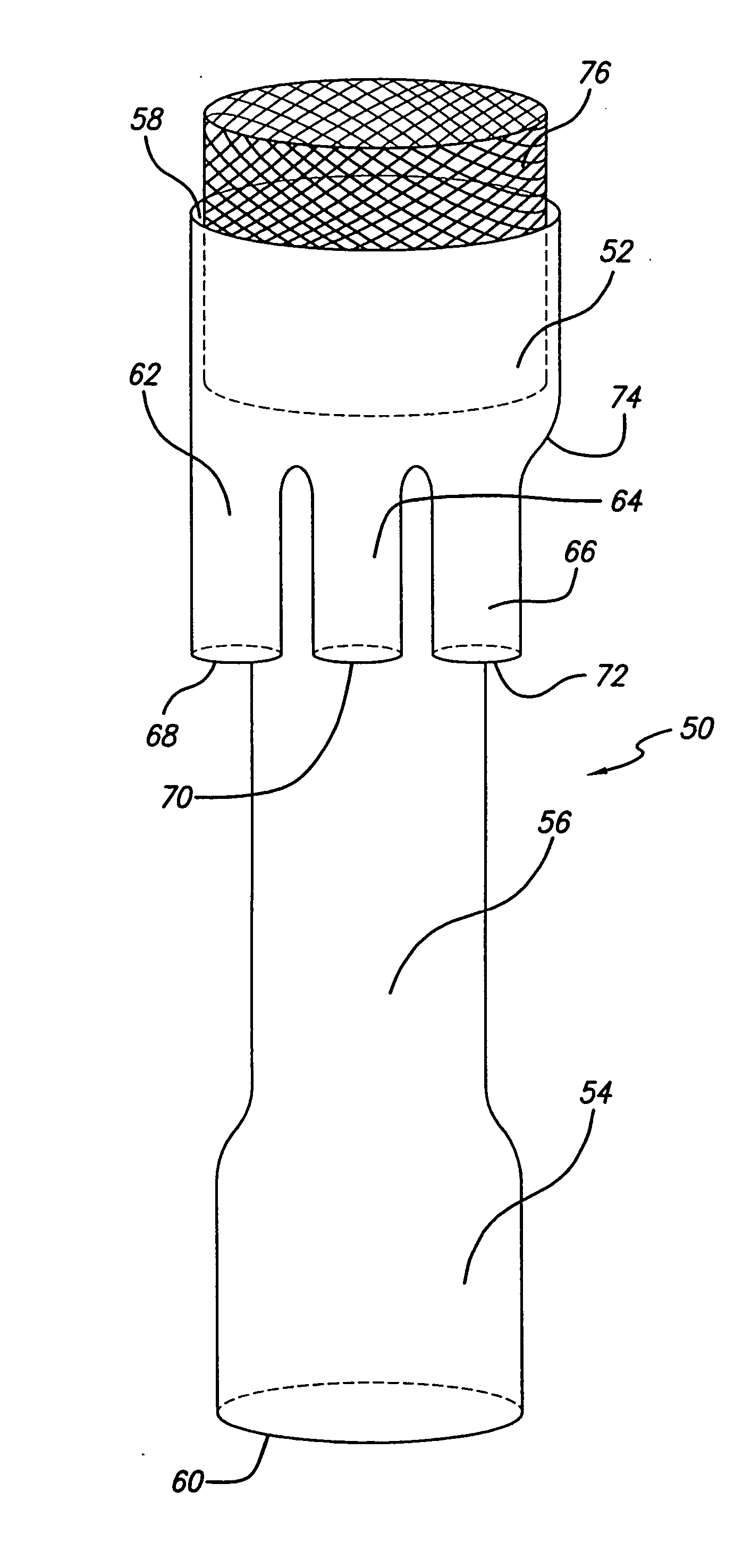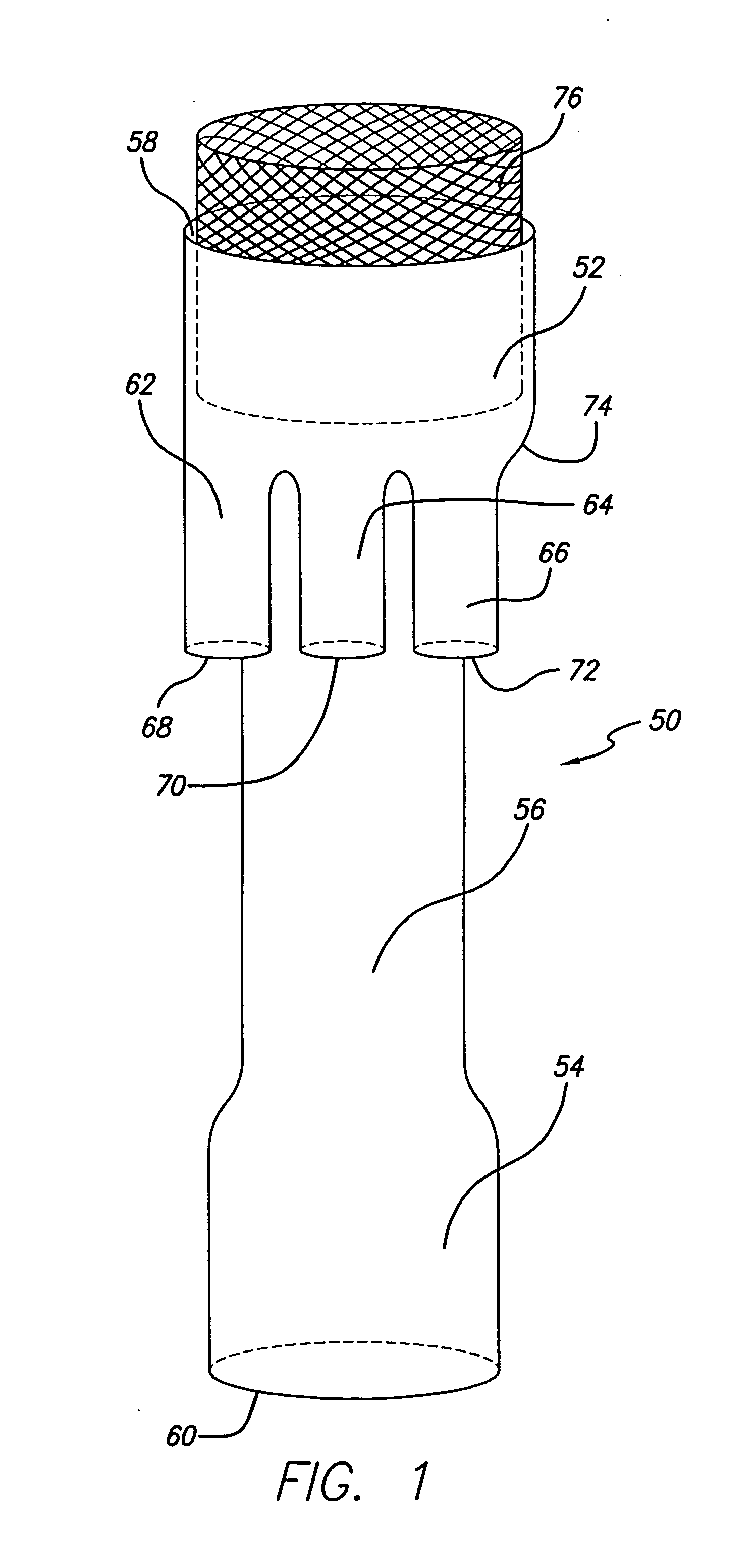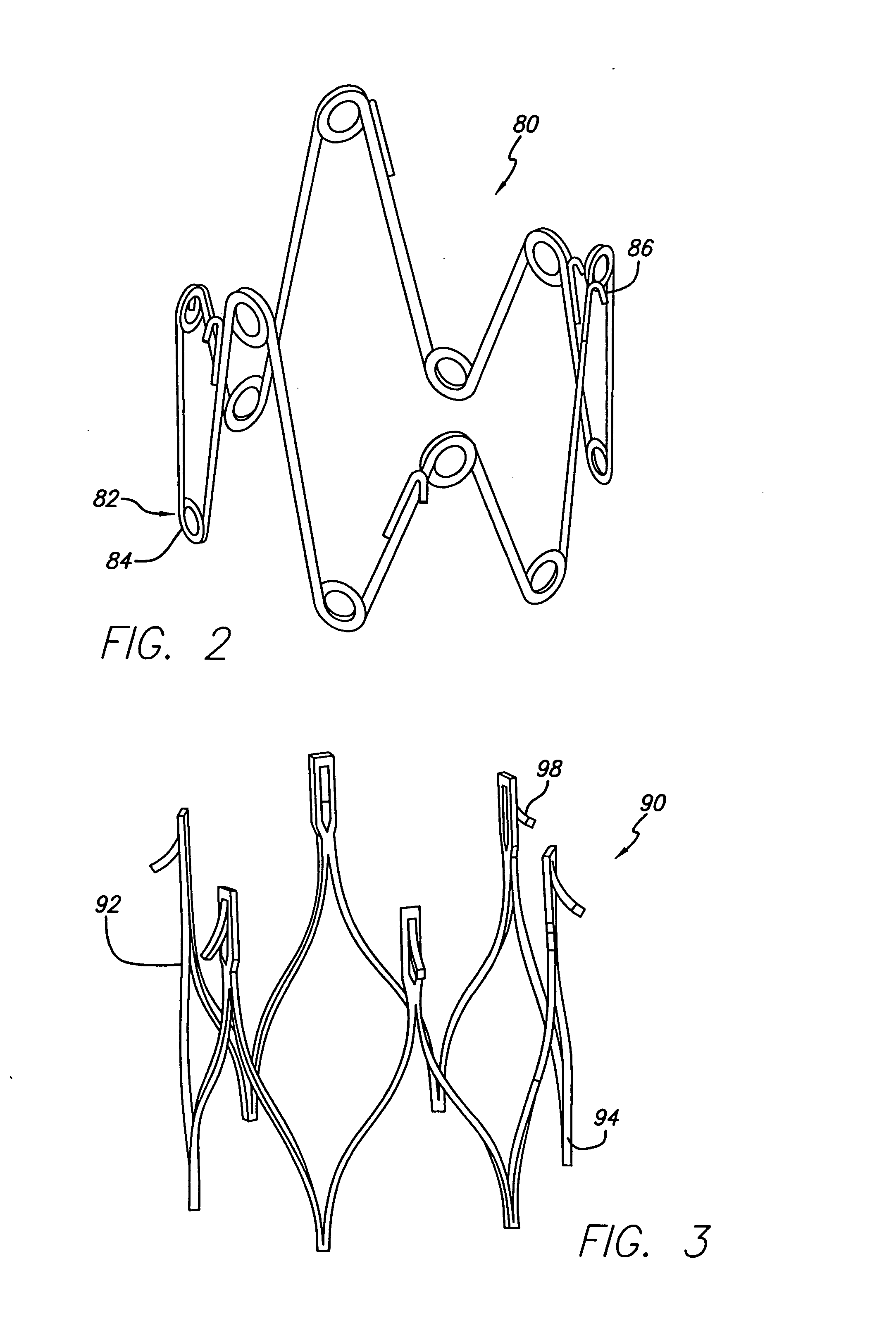Modular stent-graft for endovascular repair of aortic arch aneurysms and dissections
a technology of aortic arch aneurysms and stents, applied in the field of vasculature treatment or repair, can solve the problems of affecting the reconstruction of the area with more branches, affecting the reconstruction of the area, and affecting the recovery of the area, so as to avoid complications and minimize invasiveness
- Summary
- Abstract
- Description
- Claims
- Application Information
AI Technical Summary
Benefits of technology
Problems solved by technology
Method used
Image
Examples
Embodiment Construction
[0065] As shown in the drawings, which are included for purposes of illustration and not by way of limitation, the present invention is embodied in a system and method for treating or repairing complex vasculature that feeds vital body organs. In one aspect of the invention, disease affecting the vasculature proximal the aortic arch is addressed while in other aspects, disease affecting complex vasculature including the thoracic, renal, iliac, femoral or hypogastric arteries is addressed. It is contemplated that an approach involving an in-situ assembly of a modular graft device be employed to treat or repair such vasculature. Accordingly, various anchoring, mating, and support structures are contemplated as well as a delivery catheter system for accomplishing the deployment of the same. Further, the present invention provides a minimally invasive technique for addressing disease by avoiding conventional invasive surgery that has heretofore been required to repair highly complex por...
PUM
 Login to View More
Login to View More Abstract
Description
Claims
Application Information
 Login to View More
Login to View More - R&D
- Intellectual Property
- Life Sciences
- Materials
- Tech Scout
- Unparalleled Data Quality
- Higher Quality Content
- 60% Fewer Hallucinations
Browse by: Latest US Patents, China's latest patents, Technical Efficacy Thesaurus, Application Domain, Technology Topic, Popular Technical Reports.
© 2025 PatSnap. All rights reserved.Legal|Privacy policy|Modern Slavery Act Transparency Statement|Sitemap|About US| Contact US: help@patsnap.com



